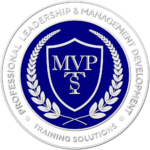As a leader, it is essential to recognize that real learning takes place at the edge of your current capabilities. This understanding can profoundly influence how you approach your own development and how you foster growth within your team. Embracing this edge means stepping out of your comfort zone and encouraging others to do the same, pushing boundaries to unlock true potential.
First, acknowledge that the edge of your capabilities is where growth happens. When you operate within your comfort zone, you rely on existing skills and knowledge, which can lead to stagnation. Going outside of this comfort zone, nevertheless, forces you to learn new abilities, adjust to strange circumstances, and work through challenging obstacles. This process not only enhances your abilities but also expands your capacity to lead effectively. As a leader, your willingness to embrace the unknown sets a powerful example for your team.
Encouraging your team to operate at the edge of their capabilities requires creating an environment that supports risk-taking and learning from failure. Cultivate a culture where challenges are viewed as opportunities for growth rather than threats. Giving your team the tools, encouragement, and psychological security they need to experiment and take measured chances is part of this. Members of a team are more likely to innovate and make breakthroughs when they feel comfortable venturing outside of their comfort zones.
Additionally, it is crucial to set stretch goals that push your team to reach beyond their current abilities. These goals should be ambitious yet attainable with effort and persistence. Setting high expectations and providing the necessary support, you help your team realize their potential and drive continuous improvement. This strategy not only improves individual performance but also builds the team’s general capacity, enabling them to take on ever more difficult tasks.
Furthermore, provide ongoing feedback and opportunities for reflection. Learning at the edge of your capabilities often involves making mistakes and encountering setbacks. Constructive feedback helps individuals understand their areas for improvement and refine their approach. Urge your staff to consider their experiences, note the lessons they have learned, and use this knowledge in the next projects. This iterative process of action and reflection is critical for deep, transformative learning.
In conclusion, real learning takes place at the edge of your current capabilities, where you and your team are challenged to grow beyond what you already know. As a leader, it is your responsibility to embrace this edge and foster an environment that encourages continuous learning and development. Stepping out of your comfort zone, setting stretch goals, and supporting your team through feedback and reflection, you enable both personal and collective growth. This approach not only enhances your leadership effectiveness but also drives innovation and success within your organization.
MVPTS STAFF
